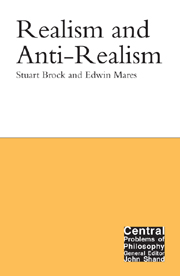11 - Possible worlds
from Part II
Summary
Whether or not one is a realist about numbers, subatomic particles, moral properties or secondary qualities, it is easy to see the motivation for adopting a realist stance towards such purported entities. But some philosophers are realists of a more radical kind. According to them there are ghosts, goblins, witches, warlocks, angels, archangels, devils and demons. There are little green men who walk around with toast and jam on their heads six days of the week (on Sundays they wear crumpets and honey). There are swans that smoke cigars and monkeys that fly. Such entities are not of our own manufacture: they are real and exist independently of us. And such entities are not mere abstractions: they are concrete entities with a precise spatiotemporal location. What is truly unfortunate, however, is that we shall never become acquainted with these strange and exotic creatures. Why? They exist in a parallel universe – other worlds – spatially, temporally and causally discontinuous with ours.
This somewhat fantastic idea is put forward by David Lewis (1986). The suggestion is made in the context of discussions about modality and related issues. But it is important to stress that these claims are not modal claims. They are merely assertions about what is real. Perhaps, then, we should spell out in a little more detail some of the ontological commitments made by Lewis before we can evaluate his reasons for claiming that such entities are real.
- Type
- Chapter
- Information
- Realism and Anti-Realism , pp. 174 - 198Publisher: Acumen PublishingPrint publication year: 2007

